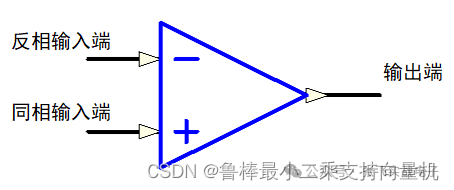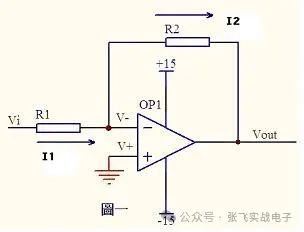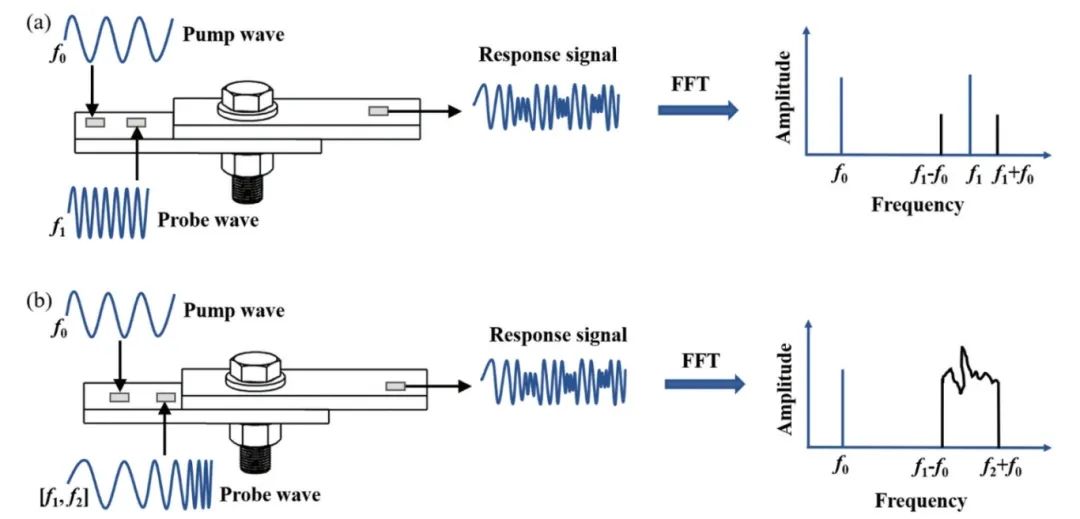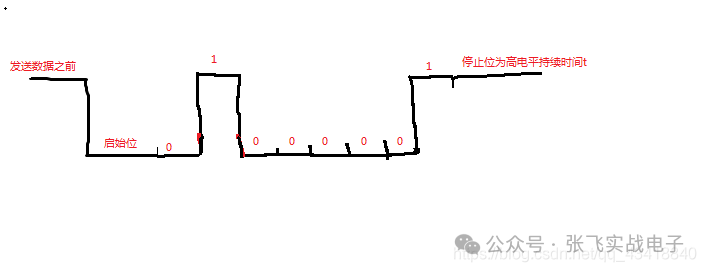大家对我解读属性访问的博客文章反应热烈,这启发了我再写一篇关于 Python 有多少语法实际上只是语法糖的文章。在本文中,我想谈谈二元算术运算。
具体来说,我想解读减法的工作原理:a - b。我故意选择了减法,因为它是不可交换的。这可以强调出操作顺序的重要性,与加法操作相比,你可能会在实现时误将 a 和 b 翻转,但还是得到相同的结果。
查看 C 代码
按照惯例,我们从查看 CPython 解释器编译的字节码开始。
>> > def sub(): a - b
...
>> > import dis
>> > dis.dis(sub)
1 0 LOAD_GLOBAL 0 (a)
2 LOAD_GLOBAL 1 (b)
4 BINARY_SUBTRACT
6 POP_TOP
8 LOAD_CONST 0 (None)
10 RETURN_VALUE
看起来我们需要深入研究 BINARY_SUBTRACT 操作码。翻查 Python/ceval.c 文件,可以看到实现该操作码的 C 代码如下:
case TARGET(BINARY_SUBTRACT): {
PyObject *right = POP();
PyObject *left = TOP();
PyObject *diff = PyNumber_Subtract(left, right);
Py_DECREF(right);
Py_DECREF(left);
SET_TOP(diff);
if (diff == NULL)
goto error;
DISPATCH();
}
来源:https://github.com/python/cpython/blob/6f8c8320e9eac9bc7a7f653b43506e75916ce8e8/Python/ceval.c#L1569-L1579
这里的关键代码是PyNumber_Subtract(),实现了减法的实际语义。继续查看该函数的一些宏,可以找到binary_op1() 函数。它提供了一种管理二元操作的通用方法。
不过,我们不把它作为实现的参考,而是要用Python的数据模型,官方文档很好,清楚介绍了减法所使用的语义。
从数据模型中学习
通读数据模型的文档,你会发现在实现减法时,有两个方法起到了关键作用:sub 和 rsub 。
1、 sub ()方法
当执行a - b时,会在 a 的类型中查找__sub__(),然后把 b 作为它的参数。这很像我写属性访问的文章 里的__getattribute__(),特殊/魔术方法是根据对象的类型来解析的,并不是出于性能目的而解析对象本身;在下面的示例代码中,我使用_mro_getattr() 表示此过程。
因此,如果已定义 sub (),则 type(a). sub (a,b) 会被用来作减法操作。(译注:魔术方法属于对象的类型,不属于对象)
这意味着在本质上,减法只是一个方法调用!你也可以将它理解成标准库中的 operator.sub() 函数。
我们将仿造该函数实现自己的模型,用 lhs 和 rhs 两个名称,分别表示 a-b 的左侧和右侧,以使示例代码更易于理解。
# 通过调用__sub__()实现减法
def sub(lhs: Any, rhs: Any, /) - > Any:
"""Implement the binary operation `a - b`."""
lhs_type = type(lhs)
try:
subtract = _mro_getattr(lhs_type, "__sub__")
except AttributeError:
msg = f"unsupported operand type(s) for -: {lhs_type!r} and {type(rhs)!r}"
raise TypeError(msg)
else:
return subtract(lhs, rhs)
2、让右侧使用__rsub__()
但是,如果 a 没有实现__sub__() 怎么办?如果 a 和 b 是不同的类型,那么我们会尝试调用 b 的 rsub ()(rsub 里面的“r”表示“右”,代表在操作符的右侧)。
当操作的双方是不同类型时,这样可以确保它们都有机会尝试使表达式生效。当它们相同时,我们假设__sub__() 就能够处理好。但是,即使两边的实现相同,你仍然要调用__rsub__(),以防其中一个对象是其它的(子)类。
3、不关心类型
现在,表达式双方都可以参与运算!但是,如果由于某种原因,某个对象的类型不支持减法怎么办(例如不支持 4 - “stuff”)?在这种情况下,sub 或__rsub__ 能做的就是返回 NotImplemented。
这是给 Python 返回的信号,它应该继续执行下一个操作,尝试使代码正常运行。对于我们的代码,这意味着需要先检查方法的返回值,然后才能假定它起作用。
# 减法的实现,其中表达式的左侧和右侧均可参与运算
_MISSING = object()
def sub(lhs: Any, rhs: Any, /) - > Any:
# lhs.__sub__
lhs_type = type(lhs)
try:
lhs_method = debuiltins._mro_getattr(lhs_type, "__sub__")
except AttributeError:
lhs_method = _MISSING
# lhs.__rsub__ (for knowing if rhs.__rub__ should be called first)
try:
lhs_rmethod = debuiltins._mro_getattr(lhs_type, "__rsub__")
except AttributeError:
lhs_rmethod = _MISSING
# rhs.__rsub__
rhs_type = type(rhs)
try:
rhs_method = debuiltins._mro_getattr(rhs_type, "__rsub__")
except AttributeError:
rhs_method = _MISSING
call_lhs = lhs, lhs_method, rhs
call_rhs = rhs, rhs_method, lhs
if lhs_type is not rhs_type:
calls = call_lhs, call_rhs
else:
calls = (call_lhs,)
for first_obj, meth, second_obj in calls:
if meth is _MISSING:
continue
value = meth(first_obj, second_obj)
if value is not NotImplemented:
return value
else:
raise TypeError(
f"unsupported operand type(s) for -: {lhs_type!r} and {rhs_type!r}"
)
4、子类优先于父类
如果你看一下__rsub__() 的文档,就会注意到一条注释。它说如果一个减法表达式的右侧是左侧的子类(真正的子类,同一类的不算),并且两个对象的__rsub__() 方法不同,则在调用__sub__() 之前会先调用__rsub__()。换句话说,如果 b 是 a 的子类,调用的顺序就会被颠倒。
这似乎是一个很奇怪的特例,但它背后是有原因的。当你创建一个子类时,这意味着你要在父类提供的操作上注入新的逻辑。这种逻辑不一定要加给父类,否则父类在对子类操作时,就很容易覆盖子类想要实现的操作。
具体来说,假设有一个名为 Spam 的类,当你执行 Spam() - Spam() 时,得到一个 LessSpam 的实例。接着你又创建了一个 Spam 的子类名为 Bacon,这样,当你用 Spam 去减 Bacon 时,你得到的是 VeggieSpam。
如果没有上述规则,Spam() - Bacon() 将得到 LessSpam,因为 Spam 不知道减掉 Bacon 应该得出 VeggieSpam。
但是,有了上述规则,就会得到预期的结果 VeggieSpam,因为 Bacon. rsub () 首先会在表达式中被调用(如果计算的是 Bacon() - Spam(),那么也会得到正确的结果,因为首先会调用 Bacon. sub (),因此,规则里才会说两个类的不同的方法需有区别,而不仅仅是一个由 issubclass() 判断出的子类。)
# Python中减法的完整实现
_MISSING = object()
def sub(lhs: Any, rhs: Any, /) - > Any:
# lhs.__sub__
lhs_type = type(lhs)
try:
lhs_method = debuiltins._mro_getattr(lhs_type, "__sub__")
except AttributeError:
lhs_method = _MISSING
# lhs.__rsub__ (for knowing if rhs.__rub__ should be called first)
try:
lhs_rmethod = debuiltins._mro_getattr(lhs_type, "__rsub__")
except AttributeError:
lhs_rmethod = _MISSING
# rhs.__rsub__
rhs_type = type(rhs)
try:
rhs_method = debuiltins._mro_getattr(rhs_type, "__rsub__")
except AttributeError:
rhs_method = _MISSING
call_lhs = lhs, lhs_method, rhs
call_rhs = rhs, rhs_method, lhs
if (
rhs_type is not _MISSING # Do we care?
and rhs_type is not lhs_type # Could RHS be a subclass?
and issubclass(rhs_type, lhs_type) # RHS is a subclass!
and lhs_rmethod is not rhs_method # Is __r*__ actually different?
):
calls = call_rhs, call_lhs
elif lhs_type is not rhs_type:
calls = call_lhs, call_rhs
else:
calls = (call_lhs,)
for first_obj, meth, second_obj in calls:
if meth is _MISSING:
continue
value = meth(first_obj, second_obj)
if value is not NotImplemented:
return value
else:
raise TypeError(
f"unsupported operand type(s) for -: {lhs_type!r} and {rhs_type!r}"
)
推广到其它二元运算
解决掉了减法运算,那么其它二元运算又如何呢?好吧,事实证明它们的操作相同,只是碰巧使用了不同的特殊/魔术方法名称。
所以,如果我们可以推广这种方法,那么我们就可以实现 13 种操作的语义:+ 、-、* 、 @、/、//、%、**、<<、>>、&、^、和 |。
由于闭包和 Python 在对象自省上的灵活性,我们可以提炼出 operator 函数的创建。
# 一个创建闭包的函数,实现了二元运算的逻辑
_MISSING = object()
def _create_binary_op(name: str, operator: str) - > Any:
"""Create a binary operation function.
The `name` parameter specifies the name of the special method used for the
binary operation (e.g. `sub` for `__sub__`). The `operator` name is the
token representing the binary operation (e.g. `-` for subtraction).
"""
lhs_method_name = f"__{name}__"
def binary_op(lhs: Any, rhs: Any, /) - > Any:
"""A closure implementing a binary operation in Python."""
rhs_method_name = f"__r{name}__"
# lhs.__*__
lhs_type = type(lhs)
try:
lhs_method = debuiltins._mro_getattr(lhs_type, lhs_method_name)
except AttributeError:
lhs_method = _MISSING
# lhs.__r*__ (for knowing if rhs.__r*__ should be called first)
try:
lhs_rmethod = debuiltins._mro_getattr(lhs_type, rhs_method_name)
except AttributeError:
lhs_rmethod = _MISSING
# rhs.__r*__
rhs_type = type(rhs)
try:
rhs_method = debuiltins._mro_getattr(rhs_type, rhs_method_name)
except AttributeError:
rhs_method = _MISSING
call_lhs = lhs, lhs_method, rhs
call_rhs = rhs, rhs_method, lhs
if (
rhs_type is not _MISSING # Do we care?
and rhs_type is not lhs_type # Could RHS be a subclass?
and issubclass(rhs_type, lhs_type) # RHS is a subclass!
and lhs_rmethod is not rhs_method # Is __r*__ actually different?
):
calls = call_rhs, call_lhs
elif lhs_type is not rhs_type:
calls = call_lhs, call_rhs
else:
calls = (call_lhs,)
for first_obj, meth, second_obj in calls:
if meth is _MISSING:
continue
value = meth(first_obj, second_obj)
if value is not NotImplemented:
return value
else:
exc = TypeError(
f"unsupported operand type(s) for {operator}: {lhs_type!r} and {rhs_type!r}"
)
exc._binary_op = operator
raise exc
有了这段代码,你可以将减法运算定义为 _create_binary_op(“sub”, “-”),然后根据需要重复定义出其它运算。
-
运算
+关注
关注
0文章
132浏览量
26059 -
代码
+关注
关注
30文章
4883浏览量
70093 -
python
+关注
关注
56文章
4822浏览量
85943 -
解释器
+关注
关注
0文章
103浏览量
6670
发布评论请先 登录
labview怎么做二元多项式拟合?急!
HanLP二元核心词典详细解析
二元推导随机性检测的优化实现
二元二值周期自相关序列偶的应用研究
基于反演滑模的二元机翼颤振控制
二元光学概述 二元光学的基础理论
交流二元继电器由什么组成
交流二元继电器使用在哪些方面

智能家居中的清凉“智”选,310V无刷吊扇驱动方案--其利天下
炎炎夏日,如何营造出清凉、舒适且节能的室内环境成为了大众关注的焦点。吊扇作为一种经典的家用电器,以其大风量、长寿命、低能耗等优势,依然是众多家庭的首选。而随着智能控制技术与无刷电机技术的不断进步,吊扇正朝着智能化、高效化、低噪化的方向发展。那么接下来小编将结合目前市面上的指标,详细为大家讲解其利天下有限公司推出的无刷吊扇驱动方案。▲其利天下无刷吊扇驱动方案一

电源入口处防反接电路-汽车电子硬件电路设计
一、为什么要设计防反接电路电源入口处接线及线束制作一般人为操作,有正极和负极接反的可能性,可能会损坏电源和负载电路;汽车电子产品电性能测试标准ISO16750-2的4.7节包含了电压极性反接测试,汽车电子产品须通过该项测试。二、防反接电路设计1.基础版:二极管串联二极管是最简单的防反接电路,因为电源有电源路径(即正极)和返回路径(即负极,GND),那么用二极

半导体芯片需要做哪些测试
首先我们需要了解芯片制造环节做⼀款芯片最基本的环节是设计->流片->封装->测试,芯片成本构成⼀般为人力成本20%,流片40%,封装35%,测试5%(对于先进工艺,流片成本可能超过60%)。测试其实是芯片各个环节中最“便宜”的一步,在这个每家公司都喊着“CostDown”的激烈市场中,人力成本逐年攀升,晶圆厂和封装厂都在乙方市场中“叱咤风云”,唯独只有测试显

解决方案 | 芯佰微赋能示波器:高速ADC、USB控制器和RS232芯片——高性能示波器的秘密武器!
示波器解决方案总述:示波器是电子技术领域中不可或缺的精密测量仪器,通过直观的波形显示,将电信号随时间的变化转化为可视化图形,使复杂的电子现象变得清晰易懂。无论是在科研探索、工业检测还是通信领域,示波器都发挥着不可替代的作用,帮助工程师和技术人员深入剖析电信号的细节,精准定位问题所在,为创新与发展提供坚实的技术支撑。一、技术瓶颈亟待突破性能指标受限:受模拟前端

硬件设计基础----运算放大器
1什么是运算放大器运算放大器(运放)用于调节和放大模拟信号,运放是一个内含多级放大电路的集成器件,如图所示:左图为同相位,Vn端接地或稳定的电平,Vp端电平上升,则输出端Vo电平上升,Vp端电平下降,则输出端Vo电平下降;右图为反相位,Vp端接地或稳定的电平,Vn端电平上升,则输出端Vo电平下降,Vn端电平下降,则输出端Vo电平上升2运算放大器的性质理想运算

ElfBoard技术贴|如何调整eMMC存储分区
ELF 2开发板基于瑞芯微RK3588高性能处理器设计,拥有四核ARM Cortex-A76与四核ARM Cortex-A55的CPU架构,主频高达2.4GHz,内置6TOPS算力的NPU,这一设计让它能够轻松驾驭多种深度学习框架,高效处理各类复杂的AI任务。

米尔基于MYD-YG2LX系统启动时间优化应用笔记
1.概述MYD-YG2LX采用瑞萨RZ/G2L作为核心处理器,该处理器搭载双核Cortex-A55@1.2GHz+Cortex-M33@200MHz处理器,其内部集成高性能3D加速引擎Mail-G31GPU(500MHz)和视频处理单元(支持H.264硬件编解码),16位的DDR4-1600/DDR3L-1333内存控制器、千兆以太网控制器、USB、CAN、

运放技术——基本电路分析
虚短和虚断的概念由于运放的电压放大倍数很大,一般通用型运算放大器的开环电压放大倍数都在80dB以上。而运放的输出电压是有限的,一般在10V~14V。因此运放的差模输入电压不足1mV,两输入端近似等电位,相当于“短路”。开环电压放大倍数越大,两输入端的电位越接近相等。“虚短”是指在分析运算放大器处于线性状态时,可把两输入端视为等电位,这一特性称为虚假短路,简称

飞凌嵌入式携手中移物联,谱写全国产化方案新生态
4月22日,飞凌嵌入式“2025嵌入式及边缘AI技术论坛”在深圳成功举办。中移物联网有限公司(以下简称“中移物联”)携OneOS操作系统与飞凌嵌入式共同推出的工业级核心板亮相会议展区,操作系统产品部高级专家严镭受邀作《OneOS工业操作系统——助力国产化智能制造》主题演讲。

ATA-2022B高压放大器在螺栓松动检测中的应用
实验名称:ATA-2022B高压放大器在螺栓松动检测中的应用实验方向:超声检测实验设备:ATA-2022B高压放大器、函数信号发生器,压电陶瓷片,数据采集卡,示波器,PC等实验内容:本研究基于振动声调制的螺栓松动检测方法,其中低频泵浦波采用单频信号,而高频探测波采用扫频信号,利用泵浦波和探测波在接触面的振动声调制响应对螺栓的松动程度进行检测。通过螺栓松动检测

MOS管驱动电路——电机干扰与防护处理
此电路分主电路(完成功能)和保护功能电路。MOS管驱动相关知识:1、跟双极性晶体管相比,一般认为使MOS管导通不需要电流,只要GS电压(Vbe类似)高于一定的值,就可以了。MOS管和晶体管向比较c,b,e—–>d(漏),g(栅),s(源)。2、NMOS的特性,Vgs大于一定的值就会导通,适合用于源极接地时的情况(低端驱动),只要栅极电压达到4V或10V就可以

压敏(MOV)在电机上的应用剖析
一前言有刷直流电机是一种较为常见的直流电机。它的主要特点包括:1.结构相对简单,由定子、转子、电刷和换向器等组成;2.通过电刷与换向器的接触来实现电流的换向,从而使电枢绕组中的电流方向周期性改变,保证电机持续运转;3.具有调速性能较好等优点,可以通过改变电压等方式较为方便地调节转速。有刷直流电机在许多领域都有应用,比如一些电动工具、玩具、小型机械等。但它也存

硬件原理图学习笔记
这一个星期认真学习了硬件原理图的知识,做了一些笔记,方便以后查找。硬件原理图分为三类1.管脚类(gpio)和门电路类输入输出引脚,上拉电阻,三极管与门,或门,非门上拉电阻:正向标志作用,给悬空的引脚一个确定的状态三极管:反向三极管(gpio输出高电平,NP两端导通,被控制端导通,电压为0)->NPN正向三极管(gpio输出低电平,PN两端导通,被控制端导通,

TurMass™ vs LoRa:无线通讯模块的革命性突破
TurMass™凭借其高传输速率、强大并发能力、双向传输、超强抗干扰能力、超远传输距离、全国产技术、灵活组网方案以及便捷开发等八大优势,在无线通讯领域展现出强大的竞争力。

RZT2H CR52双核BOOT流程和例程代码分析
RZT2H是多核处理器,启动时,需要一个“主核”先启动,然后主核根据规则,加载和启动其他内核。本文以T2H内部的CR52双核为例,说明T2H多核启动流程。





 Python 的二元算术运算分析
Python 的二元算术运算分析












评论